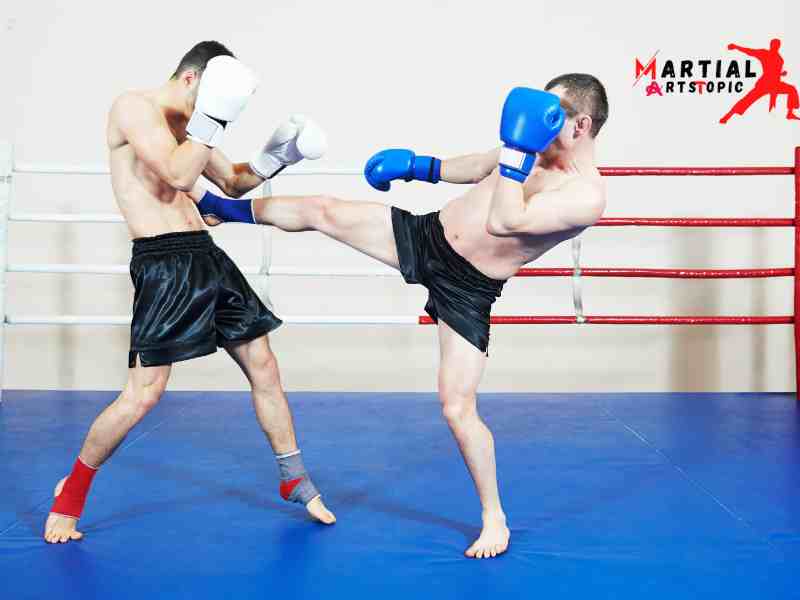
The Power of Muay Thai
Muay Thai, also known as the Art of Eight Limbs, is a formidable martial art that originated in Thailand. With its powerful strikes using fists, elbows, knees, and shins, Muay Thai has gained a reputation as one of the most ruthless combat sports in the world. In “The Power of Muay Thai: The Ultimate Guide to Thailand’s Most Ruthless Martial Art,” readers will explore the rich history and traditions of Muay Thai, learn about its techniques and training methods, and discover the physical and mental benefits of practicing this ancient art form. Whether you’re a beginner or a seasoned practitioner, this comprehensive guide will provide valuable insights and tips to help you unlock the true power of Muay Thai.
What is Muay Thai?
Muay Thai, also known as the “Art of Eight Limbs,” is a traditional martial art and combat sport from Thailand. The combined use of fists, elbows, knees, and shins characterizes it, making it a highly effective and versatile form of striking. Muay Thai emphasizes both offensive and defensive techniques, with practitioners developing strength, agility, and mental discipline through rigorous training. With its focus on powerful, explosive movements and close-quarters combat, Muay Thai has gained popularity worldwide as a practical self-defense system and a challenging fitness regimen. Its rich cultural heritage and emphasis on respect and sportsmanship make it a deeply rewarding and holistic martial art to study and practice.
History of Muay Thai
The History of Muay Thai: Unveiling the Ancient Art of Eight Limbs Muay Thai, also known as the Art of Eight Limbs, is a captivating martial art that has a rich history spanning centuries. Originating in ancient Thailand, Muay Thai has developed from a combat technique used by Thai warriors to a renowned sport with a global following. In this blog post, we will delve deep into the origins, development, and cultural significance of Muay Thai, shedding light on its fascinating journey through time.
Originating in the 16th century, Muay Thai traces its roots back to the ancient martial arts practices of the Siamese people. Initially developed as a means of self-defense and survival during times of war, Muay Thai quickly became an integral part of Thai culture. It was not only taught to warriors, but also practiced by the common folk for self-protection.
Muay Thai’s techniques and training methods were refined over time, making it a formidable martial art. The art form gained prominence during the 18th century when it became an essential part of military training for Thai soldiers. This period marked the birth of organized competitions, as soldiers would showcase their skills in front of spectators and royal courts.
With the modern era, Muay Thai underwent significant transformations. The sport gained international recognition and started attracting practitioners from around the world. Its popularity skyrocketed, leading to the establishment of formal training camps, gyms, and professional competitions.
One of the key factors behind the rise of Muay Thai as a global sport is its effectiveness as a combat system. Unlike many other martial arts, Muay Thai employs the use of eight limbs – fists, elbows, knees, and shins – making it one of the most versatile and devastating striking arts. This unique characteristic has contributed to its growing popularity among martial arts enthusiasts, professional fighters, and fitness enthusiasts alike.
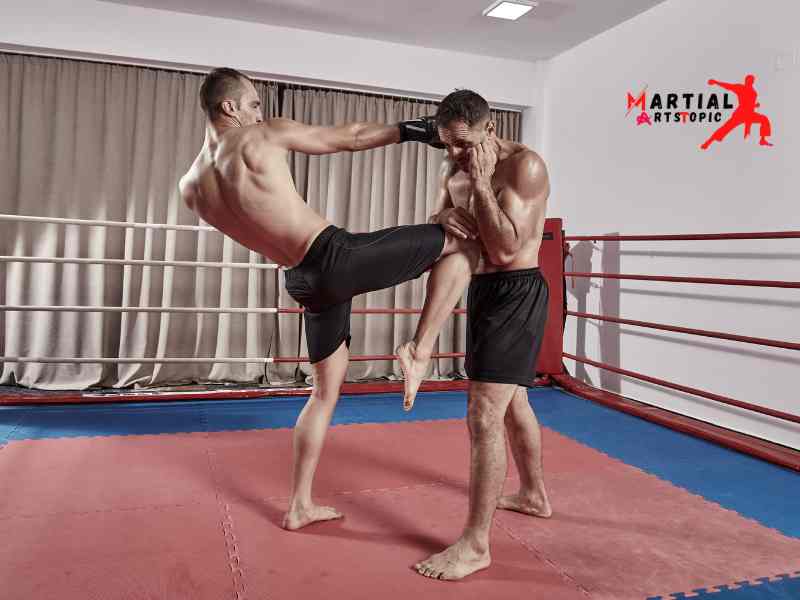
The cultural significance of Muay Thai cannot be understated. It is deeply intertwined with Thai traditions and has played a vital role in shaping the nation’s identity. Muay Thai matches are not merely sporting events; they are vibrant displays of Thai culture, accompanied by traditional music and rituals. The sport holds a revered place in Thai society, with fighters often receiving celebrity status and being hailed as national heroes.
Muay Thai’s global appeal can be attributed to its myriad benefits of self-defense. Training in Muay Thai offers a holistic approach to physical fitness, promoting strength, agility, endurance, and mental discipline. It is a dynamic workout that engages the entire body, helping practitioners achieve peak physical condition.
In recent years, Muay Thai has gained recognition as a competitive sport on the world stage. Professional fighters from Thailand and other countries compete in prestigious events, such as the Lumpinee Boxing Stadium Championship and the Rajadamnern Championship, showcasing their skills and vying for titles.
As Muay Thai continues to grow in popularity, it faces the challenge of preserving its traditional roots while embracing modern developments. Efforts are being made to protect the authenticity and integrity of the sport, ensuring that its cultural heritage remains intact.
Origins and development of Muay Thai in Thailand
The Origins and Development of Muay Thai in Thailand Muay Thai, also known as “The Art of Eight Limbs,” is a traditional martial art that originated in Thailand. With a rich history and deep cultural significance, Muay Thai has become one of the most popular combat sports in the world. In this blog post, we will explore the origins and development of Muay Thai in Thailand, shedding light on its journey from ancient battlefields to modern-day arenas.
Origins of Muay Thai
Muay Thai traces its roots back to the ancient battlefields of Thailand. Historians believe that they have practiced the art of Muay Thai for over a thousand years, regarding this martial art dating as far back as the 13th century. Initially developed for self-defense, Muay Thai quickly developed into a crucial skill for the military. They trained soldiers in this combat technique to protect themselves and their kingdoms.
Evolution of Muay Thai
Over the centuries, Muay Thai continued to develop and adapt. It underwent various transformations, incorporating techniques from other martial arts and refining its own unique style. The art became more than just a means of self-defense; it became a way of life for the people of Thailand.
In the 18th century, during the reign of King Rama I, Muay Thai was formalized and became an integral part of military training. The King recognized its importance and even hosted grand tournaments to showcase the talents of his soldiers. These tournaments were not only a display of strength but also a celebration of Thai culture and tradition.
Modernization and International Recognition
In the 20th century, Muay Thai underwent further development and modernization. They established rules and regulations to ensure the safety of the fighters, and the sport gained popularity both within Thailand and internationally. Muay Thai matches became a prominent feature of festivals and events, attracting spectators from all walks of life.
With television and the rise of combat sports as entertainment, Muay Thai gained global recognition. Its intense and dynamic fighting style captivated audiences around the world, leading to the establishment of international organizations and competitions dedicated to Muay Thai.
Today, they practice Muay Thai not only in Thailand, but also in various countries worldwide. It has become a professional sport with a dedicated fan base and a thriving industry. Fighters from different corners of the globe travel to Thailand to train in the art of Muay Thai and compete against some of the best practitioners in the world.
Brief overview of Muay Thai as a martial art
Muay Thai: Uncovering the Art of Eight Limbs Muay Thai, also known as “The Art of Eight Limbs,” is a traditional martial art that originated in Thailand. With its rich history and dynamic techniques, Muay Thai has gained worldwide recognition as a highly effective combat sport. In this blog post, we will summarize Muay Thai, its origins, training methods, and its benefits for practitioners.
Originating in ancient Thailand, Muay Thai has developed over centuries, blending elements of boxing, kickboxing, and various other striking techniques. Unlike many other martial arts, Muay Thai uses the eight points of contact – hands, elbows, knees, and shins – which give rise to its famous nickname, “The Art of Eight Limbs.”
Training in Muay Thai focuses on building strength, agility, and endurance. Practitioners engage in intense workouts that include shadow boxing, pad work, heavy bag training, and sparring sessions. These rigorous training methods not only enhance physical fitness but also develop mental toughness, discipline, and self-confidence.
One of the key aspects that sets Muay Thai apart from other martial arts is its emphasis on practicality and real-world application. They designed Muay Thai techniques to be effective in a real-life self-defense situation. This makes it a popular choice for individuals seeking self-defense skills or those interested in competitive fighting.
Muay Thai’s popularity has surged in recent years because of its inclusion in mixed martial arts (MMA) competitions, such as the UFC. Many MMA fighters incorporate Muay Thai techniques into their striking arsenal, recognizing its effectiveness and versatility in the ring.
Apart from its practical applications, Muay Thai offers many health benefits. Regular practice of Muay Thai helps in weight loss, improving cardiovascular health, and increasing overall body strength. The high-intensity workouts involved in Muay Thai training provide a full-body workout, targeting various muscle groups and improving overall coordination.
Muay Thai training promotes mental well-being by reducing stress, improving focus, and boosting self-esteem. The discipline required to master the techniques instills a sense of accomplishment and self-confidence, translating into other areas of life.
Whether you are looking to learn self-defense techniques, improve physical fitness, or pursue a career in combat sports, Muay Thai offers something to everyone. Its dynamic and versatile techniques, combined with its rich cultural heritage, make it an interesting martial art to explore.
Basic Techniques
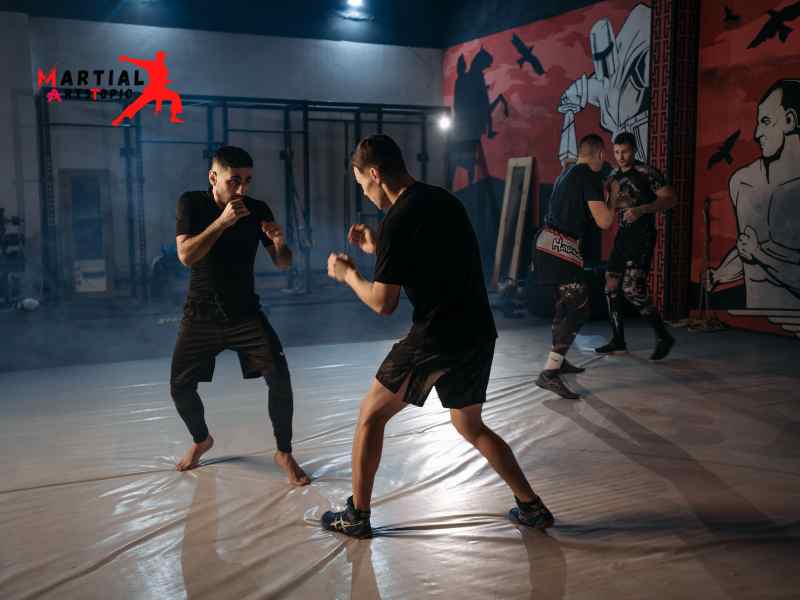
Muay Thai: Mastering the Basic Techniques for Unstoppable Success Are you ready to step into the world of Muay Thai? This exhilarating combat sport has gained immense popularity around the globe for its unique blend of strikes, clinches, and kicks. Whether you are a seasoned martial artist or a beginner looking to explore a new discipline, mastering the basic techniques of Muay Thai is essential for your success in the ring. In this blog post, we will delve into the fundamental techniques that will set you on the path to becoming an unstoppable force in the world of Muay Thai.
The Jab: Your First Line of Defense
The jab is the most basic and versatile punch in Muay Thai. It serves as your first line of defense and sets up your more powerful strikes. The key to a perfect jab lies in its speed and accuracy. Practice throwing quick, straight punches from your lead hand, keeping your other hand up to guard against counterattacks. A well-executed jab can keep your opponent at bay and create openings for your next move.
The Cross: Unleashing the Power
In delivering knockout blows, the cross is your go-to technique. This technique involves rotating your hips and shoulders while throwing a powerful straight punch with your rear hand. I should deliver the cross with maximum force, aiming for your opponent’s chin or body. Remember to maintain proper form and balance to generate the most power and avoid leaving yourself vulnerable to counterattacks.
The Roundhouse Kick: Devastating Strikes from Your Legs
We know Muay Thai for its devastating kicks, and the roundhouse kick is a staple technique. This powerful strike involves a swift rotation of the hips, followed by a whip-like extension of your leg. Aim to strike with the shin, targeting your opponent’s body or legs. Mastering the roundhouse kick requires hours of practice to perfect your technique, balance, and timing. Incorporate it into your training regimen to become a formidable force in the ring.
The Knee Strike: Close-Range Domination
In the clinch, where distance is minimized, the knee strike becomes a potent weapon. This technique involves driving your knee into your opponent’s body or head while maintaining control of the clinch. To execute a powerful knee strike, engage your core muscles and thrust your hips forward, generating maximum force. Practice knee strikes against pads or heavy bags to develop precision and power in this close-range technique.
The Elbow Strike: The Art of Cutting through Defenses
Known as the “razor blade” of Muay Thai, the elbow strike is a devastating technique that can cut through an opponent’s defenses with ease. There are various elbow strikes, including horizontal, diagonal, and spinning elbows. Each requires precise technique and timing to be effective. Incorporate elbow strikes into your training routine to add an element of surprise and versatility to your arsenal.
Mastering the basic techniques of Muay Thai is a journey that requires dedication, discipline, and consistent practice. Remember to always prioritize safety when training and consult with a qualified instructor to ensure proper technique and form. As you progress in your Muay Thai journey, continue to refine and expand upon these fundamental techniques to become a well-rounded fighter.
The Defense
While offensive techniques are vital, mastering defensive techniques is equally important in Muay Thai. Techniques like blocking, parrying, and evading strikes can help you avoid damage and conserve energy. Developing exceptional defensive skills will make you a well-rounded fighter capable of withstanding your opponent’s onslaught.
Muay Thai for Self-Defense
Muay Thai for Self-Defense: Unleashing Your Inner Warrior In a world where personal safety is of utmost importance, it’s crucial to equip oneself with effective self-defense skills. While there are many martial arts disciplines out there, one stands out as both an art form and a formidable self-defense system – Muay Thai.
Muay Thai, also known as the “Art of Eight Limbs,” hails from Thailand and has gained popularity around the globe for its practicality, versatility, and effectiveness. Combining punches, kicks, elbows, and knee strikes, this combat sport offers a well-rounded approach to self-defense, making it an ideal choice for individuals of all ages and fitness levels.
Why Muay Thai?
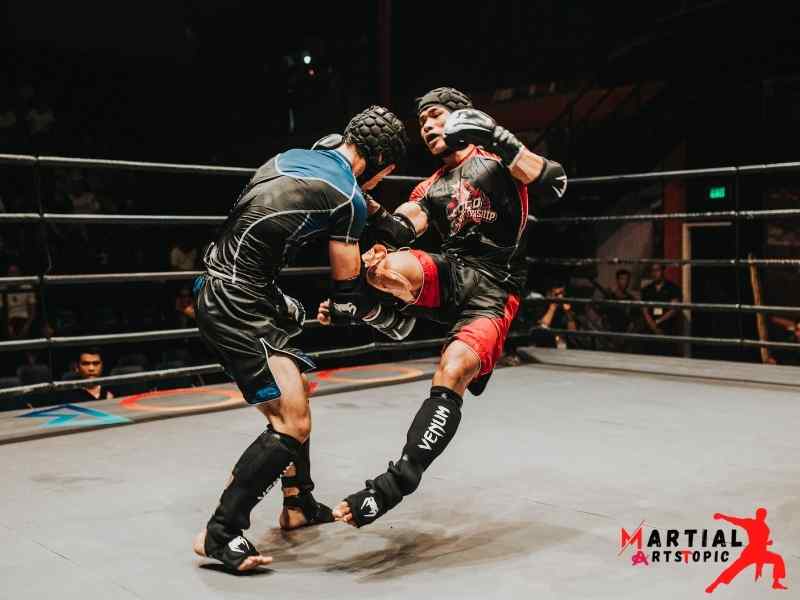
Muay Thai’s effectiveness as a self-defense system lies in its emphasis on real-life situations and realistic training scenarios. Unlike other martial arts that focus primarily on technique or form, Muay Thai trains practitioners to be prepared for the unpredictable nature of a physical altercation.
The art of Muay Thai teaches individuals how to strike effectively in close quarters, making it suitable for self-defense situations where space is limited. The powerful punches and kicks, combined with devastating elbow and knee strikes, give practitioners an advantage over attackers and the ability to neutralize threats efficiently.
Benefits of Muay Thai for Self-Defense
- Practicality: it designed Muay Thai techniques to be practical in real-life situations. From defending against common attacks to learning how to escape holds, practitioners gain skills that can be applied in various self-defense scenarios.
- Confidence: Learning Muay Thai instills self-confidence like no other. As you progress in your training, you will gain a sense of self-assurance, knowing that you can protect yourself and your loved ones if the need arises.
- Physical Fitness: Muay Thai is a full-body workout that improves cardiovascular endurance, strength, flexibility, and agility. Regular training sessions will not only equip you with self-defense skills, but also help you stay fit and healthy.
- Mental Discipline: Muay Thai requires focus, discipline, and determination. The mental aspects of training teach practitioners to remain calm and composed even in high-pressure situations, allowing them to make rational decisions when faced with danger.
- Stress Relief: besides being a practical self-defense system, Muay Thai serves as an excellent outlet for stress relief. The rigorous training sessions help release endorphins, reducing anxiety and promoting overall mental well-being.
Preparing for Self-Defense with Muay Thai
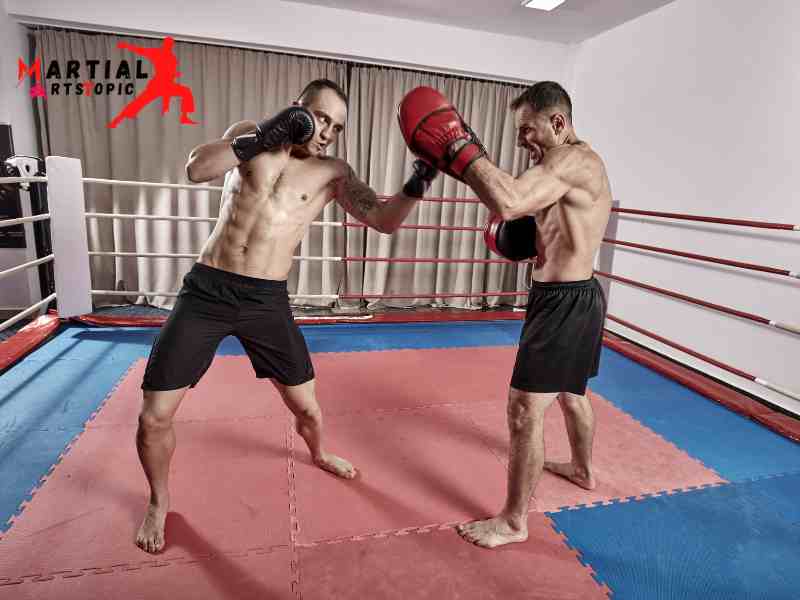
To fully use Muay Thai as a self-defense system, it’s crucial to find a reputable gym or training center that offers authentic instruction. Look for experienced instructors who prioritize safety and provide realistic training scenarios that simulate real-life encounters.
Consistency is key when learning Muay Thai for self-defense. Regular practice and commitment to honing your skills will ensure that the techniques become second nature, allowing you to react instinctively in dangerous situations.
Remember, Muay Thai is not just about learning how to fight; it’s about developing self-discipline, respect, and a strong sense of personal responsibility. By embracing the art of Muay Thai, you will gain the confidence and skills necessary to protect yourself and your loved ones, both inside and outside the ring.
Fighting Techniques and Strategies
Fighting Techniques and Strategies: The Art of Muay Thai Are you ready to unleash your inner warrior? Look no further than Muay Thai, the ancient martial art that combines striking techniques with clinching and the use of knees and elbows. In this blog post, we will delve into the world of Muay Thai, exploring its fighting techniques and strategies that will take your skills to the next level.
The Basics of Muay Thai
Muay Thai, also known as the “Art of Eight Limbs,” is a combat sport that originated in Thailand. It focuses on using the fists, elbows, knees, and shins for striking and clinching techniques. The goal is to strike your opponent with precision and power while defending yourself against their attacks.
Striking Techniques
Muay Thai offers a wide range of striking techniques that require precision, speed, and power. These include punches, kicks, elbows, and knees. Each strike has its purpose, whether it’s to create distance, target vulnerable areas, or deliver knockout blows. Mastering these striking techniques is essential for any Muay Thai practitioner.
Clinching
Clinching is a crucial aspect of Muay Thai that sets it apart from other martial arts. It involves close-range grappling, where fighters use various techniques to gain control over their opponent. From knee strikes to sweeps and throws, clinching allows you to dominate the fight and wear down your adversary.
Defensive Strategies
Defense is just as important as offense in Muay Thai. Learning defensive strategies such as blocking, parrying, and evading will help you avoid incoming strikes and protect yourself from harm. Being able to expect your opponent’s moves and react swiftly is the key to staying in control during a fight.
Conditioning and Fitness
Muay Thai demands physical strength, endurance, and flexibility. Training includes rigorous conditioning exercises, such as running, skipping rope, and practicing techniques repeatedly to develop muscle memory. Strength training and flexibility exercises are essential for enhancing your overall performance in the ring.
Mental Toughness
Muay Thai is not just a physical battle; it’s a mental one too. Developing mental toughness is crucial to overcome challenges, push your limits, and stay focused during fights. Visualization, meditation, and mental conditioning techniques can help you remain calm, composed, and confident in the face of adversity.
Strategy and Tactics
Muay Thai is a highly strategic sport that requires careful planning and execution. Understanding your opponent’s weaknesses, exploiting their vulnerabilities, and adapting your techniques accordingly are key components of successful fights. A well-thought-out game plan can give you the upper hand and lead you to victory.
Continuous Learning and Improvement
In Muay Thai, the learning process never ends. The best fighters are constantly seeking new knowledge, refining their techniques, and expanding their skill set. Training under experienced coaches and sparring with different opponents will expose you to various styles and help you adapt your strategies accordingly.
Benefits of Practicing Muay Thai
In recent years, the popularity of Muay Thai has been skyrocketing, and for good reason. This ancient martial art form from Thailand has captured the hearts of people worldwide, not only for its intense physicality but also for the numerous benefits it offers. From improving physical fitness to boosting mental well-being, Muay Thai is a holistic practice that can transform your life. So, if you’re ready to unleash the power within, let’s dive into the incredible benefits of practicing Muay Thai.
Enhances Full-Body Fitness
Muay Thai is renowned for its rigorous training routines, which engage your entire body. With its intense kicks, punches, knee strikes, and elbow strikes, this combat sport targets all major muscle groups, resulting in improved strength, endurance, and flexibility. Regular Muay Thai practice can help you burn calories, build lean muscle mass, and achieve a toned physique.
Boosts Cardiovascular Health
The high-intensity nature of Muay Thai training makes it an excellent cardiovascular workout. The combination of intense aerobic exercises, such as skipping rope and shadow boxing, with short bursts of explosive movements, trains your heart and lungs, improving your overall cardiovascular fitness. This not only enhances your stamina in the ring but also benefits your everyday life, making simple tasks feel easier.
Develops Mental Strength
Muay Thai is not just about physical strength; it also cultivates mental resilience. The discipline and focus required in training help develop a strong mindset that can apply to all aspects of life. Through Muay Thai, you learn to push your limits, overcome challenges, and develop self-confidence. This mental fortitude can be invaluable both inside and outside the gym.
Releases Stress and Boosts Mental Well-being
As a combat sport, Muay Thai provides an outlet for releasing stress and pent-up energy. The intense training sessions help you channel your emotions into powerful strikes, kicks, and knee strikes, allowing you to release tension and frustration. The release of endorphins during exercise promotes feelings of well-being, reduces anxiety, and improves overall mental health.
Enhances Self-defense Skills
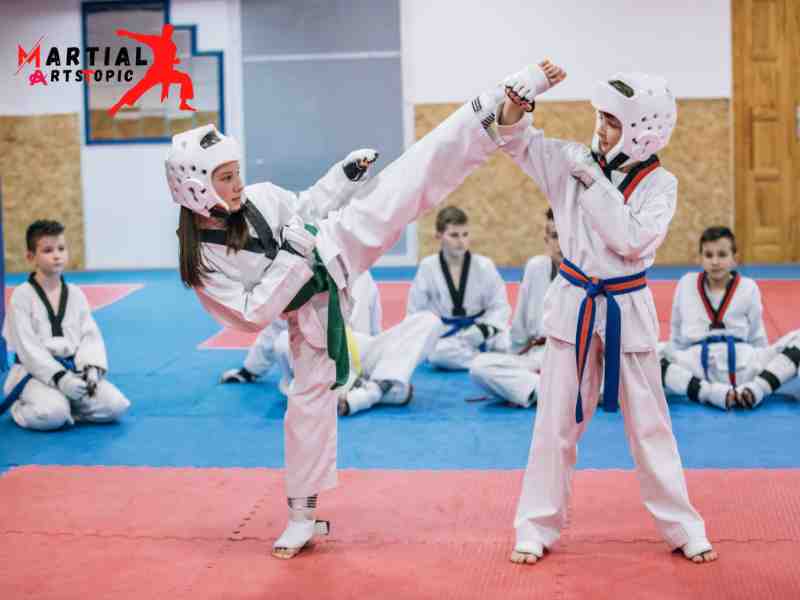
Muay Thai is not just a martial art; it is also a highly effective self-defense system. By learning the techniques and strategies of Muay Thai, you develop the ability to protect yourself in real-life situations. The comprehensive training includes learning how to strike effectively, defend against attacks, and improve your situational awareness. These skills can give you the confidence and peace of mind to navigate the world with greater security.
Fosters Discipline and Respect
In traditional Muay Thai training, discipline and respect are fundamental values. The structured training sessions, strict rules, and respectful interaction with trainers and fellow practitioners instill discipline and humility. Muay Thai teaches you the importance of patience, perseverance, and respect for yourself and others. These values can positively affect various areas of your life, helping you become a more well-rounded individual.
Rules and Regulations
Muay Thai, also known as the Art of Eight Limbs, is a combat sport with a rich history and deep-rooted traditions. To ensure a fair and safe environment for all participants, it is important to have a set of rules and regulations in place. These rules govern various aspects of the sport, including techniques, equipment, and conduct. When practicing Muay Thai, fighters must adhere to guidelines that promote fair play, respect, and fair play. By following these rules, athletes can showcase their skills and compete in a controlled manner, while preserving the essence and integrity of this revered martial art.
